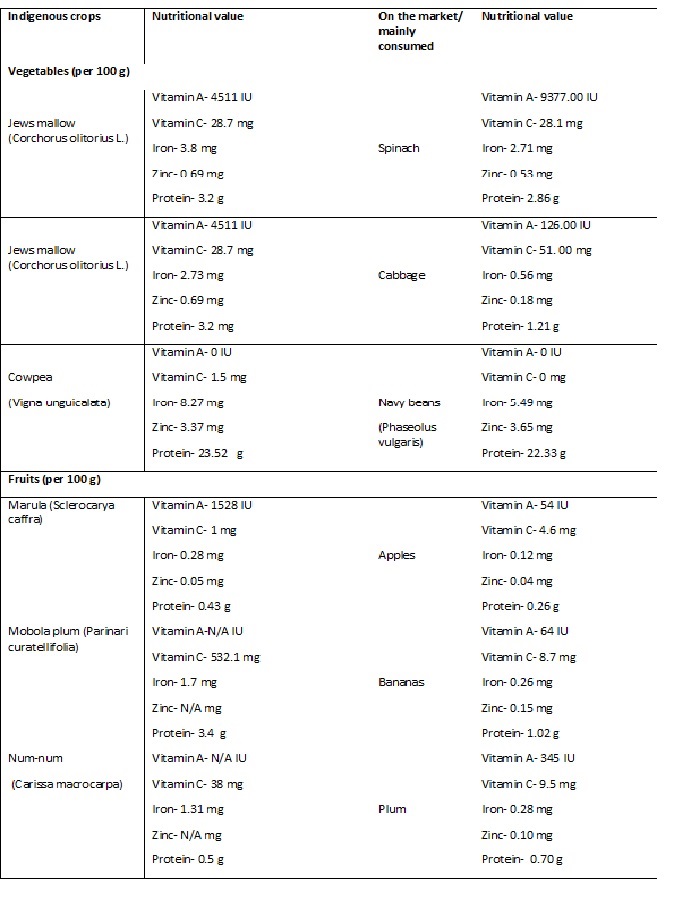Thinking Local: The need for a varied South African diet.
The quote “A knowledge of the chemical composition of foods is the first essential in the dietary treatment of disease or any quantitative study of human nutrition” by McCance and Widdowson in 1940 still holds true today as it did 79 years ago.
Plant-based staple foods included in the population’s diet are monotonous with minimal variation. The three most important crops grown in South Africa are maize, sorghum and wheat. Unfortunately, these crops can be infected by fungal pathogens that can influence yield and also lead to economic losses. Significant research has been made, particularly on wheat and maize to improve yield of these crops. However, this progress does not equate to an increase in the quality of nutrition. The consequence of neglecting nutrition quality in food crops is evident in high incidence of obesity and the prevalence in the shortage of micronutrients known as hidden hunger.
Thousands of South African’s diet is dominated by staple foods such as maize meal and bread, mostly containing macronutrients resulting in low dietary diversity. This results in an increase in micro-nutrient deficiency-induced diseases such as anemia which is associated with insufficient Vitamin A and Zinc. A study by Pretorius & Schonfeldt found out that instead of a mean vitamin A concentration in maize meal of ≥ 187.7 µg/100 g, products in the markets ranged from < 19 µg/100 g to 261 µg/100 g. In addition to this problem, vegetables and fruits with high nutrition such as broccoli, Swiss chard, asparagus, avocado, grapefruit, pineapple and blueberries are often highly-priced and out of budget for the majority of the population. The key challenges facing fruits and vegetables industry include water shortages and land expropriation. Therefore, an alternative will be to increase consumption of affordable indigenous vegetables, fruits and grain.
South Africa has a natural abundance of indigenous edible vegetables, fruits and other underutilised and neglected species which are highly nutritious, inexpensive to produce and well adapted to the environments in which they grow. These food crops include: [pearl millet, grain sorghum, cowpea, bambara groundnut, mungbean, marama bean, cleome, cowpea, amaranth, blackjack, jew’s mallow, cassava, amadube (grain and vegetables), marula, red milkwood, wild meddler, kei apple, monkey orange, mobola plum (fruits)].
However, there has been a decline in the production and consumption of indigenous food crops. The biggest challenges with the development of indigenous food includes funding opportunities, the limitations in the present policy and limited research interest in improving and commercialising indigenous food crops.
The existing policies should be updated. For example, the strategic grain reserves system which currently only prioritises maize and wheat, could be revised so that there is inclusion of indigenous food crops.
The change in policies will encourage further support and involvement of stakeholders in the development and innovation of indigenous food crops and strengthen their relevance to current developmental initiatives in South Africa. Furthermore, the importance of indigenous food crops in breeding programs (public and private sectors) will be prioritised for improvement of potential yield, hence making them more attractive to commercial farmers.
Our indigenous food crops listed on the table below have been reported to be highly nutritious and are adaptable to the environment, hence no need to use chemicals such as fungicides and pesticides. What we are currently eating is killing us, so something has to be done to get us on track with our food system. Increased consumption of processed food in South Africa, has been associated with chronic diseases such as cancer and obesity both in adults and children.
A study published in The Lancet Oncology, stated that overweight and obesity were the major risk factors, responsible for an estimated 3.6% (481 000) of all new cancer cases in 2012 (IARC).

The current projections are that by the year 2020, the local demand for food will have increased by approximately 90%. Therefore, both farmers and consumers need to begin to think locally. With support from government agencies and policymakers, the cultivation of indigenous crops will be of economic value to farmers delivering food to a growing population under a continually changing climate with a decline in water availability.













